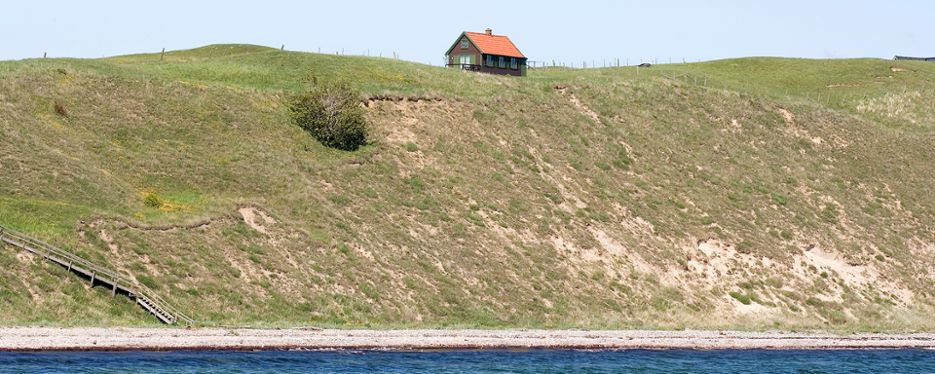Landslides – such as landslips and earthflows – are rapid mass movements of soil or rock. These movements can cause significant damage to land and buildings in the affected area.
In a landslip, the individual particles such as sand, gravel and stones flow freely in relation to each other throughout the event. In an earthflow, it is a cohesive mass of earth or a large part of a hillside that moves. Earthflows are most common in soil containing silt and clay.
Unbalanced land is a risk factor
Natural erosion processes adapt slopes and hillsides to a state of equilibrium. Factors that change this equilibrium can trigger landslides. For example, landslides are common in connection with snow melting and thawing, and during periods of heavy rain. Increased flows in watercourses can increase erosion, both on streambeds and in the riparian zone, which can affect the state of equilibrium and cause landslides.
Droughts have different effects
Droughts can have both positive and negative effects on the stability of the ground. Lower levels of groundwater mean that clay will have increased solidity over time, which improves stability. However, droughts can also cause plants to dry out and die. This means that their roots’ stabilising effect on shallow soil layers and the plants’ protective effect against erosion are reduced or disappear.
Several factors can trigger landslides
There are also other non-climate-related factors that can trigger landslides. These include vegetation being removed, stress (weight) on the ground increasing and rising land levels. Landslides are often triggered by a combination of factors.
Sensitive landslide areas
It is mainly in the southwest of the country, parts of central Sweden and areas along the river valleys in Norrland that there are soil types which are susceptible to landslides, and where landslides present a danger. Even in small watercourses in other parts of the country, erosion can lead to smaller landslides at the water’s edge. Areas with steep terrain can be affected by landslides and mudslides. Steep rocky coastlines in southern Sweden are also vulnerable to erosion due to the effects of the sea and waves, which can lead to landslides.
